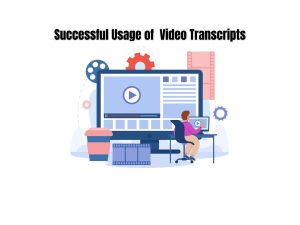
Case Studies: Successful Usage of Video Scripts
In the digital age, video content has become an integral part of online communication strategies for businesses and organizations across various industries. While videos are
Paid social advertising has grown exponentially over the years, becoming a popular channel for businesses to reach their target audience. However, it can quickly become an expensive endeavor without strategic planning. The question then becomes, how do you develop a cost-effective paid social advertising strategy? Don’t worry, we’ve got you covered in this blog post!
Paid social advertising is a method of displaying promotions or sponsored messages on social media platforms to reach a specific audience. These ads can be customized to achieve various goals like increasing brand awareness, driving website traffic, generating leads, or boosting conversions.
Without a well-thought-out strategy, you may end up overspending on ads that fail to reach your target audience or drive desired outcomes. A cost-effective strategy helps you maximize your return on investment (ROI) by utilizing your budget strategically to reach your marketing objectives.
1. Define Clear Goals
Clearly defined goals are essential as they provide direction for your campaign. These goals could align with larger business objectives like brand visibility, lead generation, sales, or customer engagement.
2. Identify and Understand Your Audience
To ensure your ads reach the right people, you must know who your audience is, where they spend time online, and what their interests and behaviors are. Use data and analytics tools to gain audience insights.
3. Choose the Right Social Media Platforms
Every social media platform has its unique demographic and stylistic characteristics. Choose the platforms where your target audience is most active. Facebook, Instagram, LinkedIn, Twitter, or Pinterest are popular choices.
4. Craft Compelling Ad Content
Create engaging ad copy and use eye-catching visuals that resonate with your audience. The goal is to pique interest, spark engagement, and prompt action.
5. Set a Budget and Schedule
Decide how much you’re willing to spend on your campaign and when you want your ads to run. Most social platforms allow you to choose between a daily budget and a lifetime budget. Start small to test the waters and adjust based on performance.
6. Leverage Targeting Options
Most social platforms offer advanced targeting options. Use these to ensure your ads reach the appropriate demographics, locations, interests, behaviors, or even specific users.
7. Test and Optimize
Consistently monitor and analyze your campaigns. A/B testing (comparing two versions of an ad to see which performs better) can inform potential improvements. Continue tweaking your ads based on performance metrics until you reach optimal results.
Creating a robust, cost-effective paid social advertising strategy might feel like a daunting task, but it becomes straightforward once you understand its core components. By defining clear goals, understanding your audience, choosing the right platforms, crafting compelling content, setting a thoughtful budget, using targeted features, and continuously optimizing, you can maximize your ROI and stay ahead in the dynamic realm of social media marketing. Happy advertising!

In the digital age, video content has become an integral part of online communication strategies for businesses and organizations across various industries. While videos are

Duplicate content refers to identical or similar content that appears on multiple URLs within a website or across different websites. While duplicate content is common





“LeadsView did an excellent job with my project and will definitely recommend. Easy to work with, flexible and good quality of work. I am more than happy to recommend them."




















Copyright 2023 © LeadsView. All Rights Reserved
